The days of the star stock-picking portfolio manager are largely behind investors, with a few exceptions. For years, passive index…
The days of the star stock-picking portfolio manager are largely behind investors, with a few exceptions. For years, passive index funds have dominated the mutual fund and exchange-traded fund (ETF) industries, much to the chagrin of active managers.
A big part of the appeal comes down to cost. Whether it’s finance, automotive or consumer electronics, investors and consumers tend to choose the cheaper product when all else is equal.
In investing, low cost is often a sign of efficiency. Active funds typically carry higher expense ratios because they include costs for research, analyst salaries, frequent trading and management overhead.
[Sign up for stock news with our Invested newsletter.]
“Just as how the stock market returns compound, the deleterious effects of high fees and transaction costs also stack up over time,” says Robert Johnson, professor of finance at Creighton University’s Heider College of Business. “In fact, the late founder and chairman of Vanguard, John Bogle, termed this phenomenon ‘the tyranny of compounding costs’”.
By contrast, passive funds simply aim to mirror an index benchmark. Their costs are mostly tied to licensing the index and portfolio management expenses, which can be further minimized using sampling instead of full replication to cut down on the number of transactions needed.
Here are 10 of the best low-cost index funds to buy today:
| Fund | Expense ratio |
| Fidelity 500 Index Fund (ticker: FXAIX) | 0.015% |
| Vanguard Total Stock Market Index Fund Admiral Shares (VTSAX) | 0.04% |
| Fidelity Zero Total Market Index Fund (FZROX) | 0% |
| BNY Mellon U.S. Large Cap Core Equity ETF (BKLC) | 0% |
| Vanguard Total International Stock Index Fund Admiral Shares (VTIAX) | 0.09% |
| Vanguard Total World Stock Index Fund Admiral Shares (VTWAX) | 0.09% |
| Xtrackers S&P 500 Scored & Screened ETF (SNPE) | 0.10% |
| Schwab U.S. Dividend Equity ETF (SCHD) | 0.06% |
| iShares Core U.S. REIT ETF (USRT) | 0.08% |
| SPDR Portfolio Aggregate Bond ETF (SPAB) | 0.03% |
Fidelity 500 Index Fund (FXAIX)
“The returns of the market have been driven by a small percentage of big winners,” Johnson explains. “For most, trying to pick winners ex-ante is a loser’s game, so the solution is to invest in diversified index funds where you don’t have to pick the winners.” FXAIX is a great fund for this role.
This Fidelity fund tracks the S&P 500. It has no transaction fees, doesn’t charge a sales load or require a minimum investment, and charges a very low 0.015% expense ratio. Over the past 10 years, FXAIX has also outperformed the majority of large-cap blend funds, with a 12.3% annualized return.
Vanguard Total Stock Market Index Fund Admiral Shares (VTSAX)
“Index funds can help investors achieve long-term success through their low costs, broad diversification, low turnover and relative predictability,” says Rodney Comegys, global head of the equity indexing group at Vanguard. Vanguard offers several index mutual funds, with VTSAX being one of the most well known.
This Vanguard fund tracks the CRSP U.S. Total Market Index, which spans nearly 3,600 small-, mid- and large-cap equities across all 11 market sectors, weighted by market capitalization. It charges a low 0.04% expense ratio and is highly tax-efficient, thanks to a 2.1% annual portfolio turnover rate.
Fidelity Zero Total Market Index Fund (FZROX)
FZROX is unique as a truly zero-expense-ratio mutual fund, offering broad exposure to over 2,600 market-cap-weighted U.S. stocks with no sales loads or transaction costs on Fidelity’s platform. The fund is a part of Fidelity’s “Zero” fund lineup, with other options available for international stocks.
FZROX’s zero-fee structure is made possible by three key features: tracking a proprietary index to avoid licensing costs, using a sampling strategy to reduce turnover and transaction expenses, and lending out portfolio securities to generate income that offsets operating costs.
BNY Mellon U.S. Large Cap Core Equity ETF (BKLC)
Zero-fee options aren’t limited to mutual funds. Some ETFs like BKLC offer the same benefit, but with the added advantages of intraday liquidity and greater tax efficiency. BKLC tracks the Solactive GBS United States 500 Index, which delivers exposure similar to the S&P 500 but with lower licensing costs.
Despite BNY Mellon’s smaller footprint in the ETF space, BKLC has been a standout performer. It has over $2.7 billion in assets and returned an annualized 15.6% over the past five years. With no expense ratio, investors should face minimal fee-related headwinds to performance going forward.
Vanguard Total International Stock Index Fund Admiral Shares (VTIAX)
“Broad-market index funds use highly efficient investment strategies with minimal portfolio turnover, which means fewer taxable capital gains distributions for investors,” Comegys says. In contrast, active mutual funds with high turnover tend to pay out high end-of-year capital gains distributions.
This dynamic can be seen in play with VTIAX. Despite holding over 8,500 international stocks, the fund maintains a low 3.4% annual turnover rate. Historically, this meant VTIAX’s distributions were all dividend payments instead of large capital gains distributions, making it more tax efficient.
Vanguard Total World Stock Index Fund Admiral Shares (VTWAX)
“Beating the market is a zero-sum game — it’s impossible for all investors in aggregate to outperform the market, as investors can’t all be above average,” Comegys says. When it comes to achieving the long-term average return of the global stock market, few funds do a better job than VTWAX.
For a 0.09% expense ratio, this Vanguard fund spans over 9,800 global equities represented by the FTSE Global All Cap Index. It covers U.S., international developed and emerging markets and remains highly tax efficient thanks to a 2.8% turnover rate. However, it does require a $3,000 minimum investment.
Xtrackers S&P 500 Scored & Screened ETF (SNPE)
Specialty funds, such as those incorporating environmental, social and governance (ESG) screens, tend to be expensive. However, investors can still find excellent value in these niches by sticking to index funds. A great example is SNPE, which tracks the S&P 500 Scored & Screened Index for a 0.1% expense ratio.
“Some ESG strategies may rely on sector tilts, underweighting or omitting sectors such as energy and industrials,” says Arne Noack, regional investment head of Xtrackers, Americas, at DWS Group. “SNPE’s methodology focuses on the best-in-class companies while maintaining industry group weightings.”
Schwab U.S. Dividend Equity ETF (SCHD)
Even complex strategies can be cheaply automated through indexing, and SCHD is a great example of that. This ETF tracks the Dow Jones U.S. Dividend 100 Index at a low 0.06% expense ratio and currently pays a high 3.8% 30-day SEC yield. It is one of the most popular dividend ETFs, with $69 billion in assets.
SCHD’s benchmark is highly selective, screening for stocks with at least 10 consecutive years of dividend payments and ranking them on free cash flow to total debt, return on equity, dividend yield and five-year dividend growth. As a result, this ETF’s portfolio tilts strongly toward value and quality factors.
iShares Core U.S. REIT ETF (USRT)
Index funds aren’t limited to broad market benchmarks; they can also target specific sectors. For example, USRT tracks 133 holdings represented by the FTSE Nareit Equity REITs Index. As expected from a real estate ETF, it pays a solid 3.2% 30-day SEC yield. It charges a 0.08% expense ratio.
That said, USRT is a good reminder to always watch for benchmark changes. On or around June 23, it will switch to tracking the FTSE Nareit Equity REITs 40 Act Capped Index. Investors who own USRT should remain aware of this and review the new benchmark to ensure it is to their liking.
SPDR Portfolio Aggregate Bond ETF (SPAB)
Indexing isn’t just for stocks. Other asset classes, like bonds, can also be selected and allocated using a rules-based methodology. A good example is SPAB, which tracks the Bloomberg U.S. Aggregate Bond Index for a low 0.03% expense ratio. The ETF currently sits at around $8.8 billion in assets.
This benchmark includes three main types of bonds: Treasurys, investment-grade corporate bonds and mortgage-backed securities. It spans short to long maturities, averaging out to an intermediate duration. SPAB currently pays a 4.4% 30-day SEC yield and distributes income on a monthly basis.
More from U.S. News
9 Best ETFs to Buy for a Recession
The 7 Best Monthly Dividend ETFs to Buy Now
7 High-Yield Covered Call ETFs Income Investors Will Love
10 Best Low-Cost Index Funds to Buy originally appeared on usnews.com
Update 05/20/25: This story was published at an earlier date and has been updated with new information.





